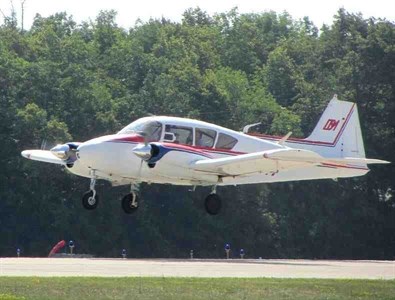
A Piper PA-23 aircraft in take-off.
Image Credit: WIKIPEDIA
December 07, 2012 - 4:37 PM
A coroner's report says it was the fire, not the crash that killed a pilot and his passenger last summer in Vernon.
James Leonard Langley, 59, and his passenger Karim Makalai, 55, had been on a round-trip sight-seeing flight around the Okanagan. Just after 1 p.m. on July 7, 2012, they took off from the Vernon airport, but weren't airborne for long.
The Piper twin-engine aircraft climbed to about 100 metres then lost control and nose-dived onto Marshall Field. A few seconds after the impact, an explosion erupted from the aircraft.
In his coroner's report, Allen Hossie says, "Autopsy examination found severe thermal injuries with extensive charring of the body.
"There was no evidence of any blunt force or deceleration injury as a cause of death."
He states a combination of carbon monoxide poisoning from the smoke and thermal injury from the flames are the cause of death for both individuals.
Aviation regional manager with the Transportation Safety Board of Canada, Bill Yearwood, says government changes could mitigate the risk of post-crash fires.
"The Transportation Safety Board made recommendations to Transport Canada in 2006 in an effort to encourage change that could reduce the risk of these fires and save lives," Yearwood told InfotelNews.
"These recommendations are classified as active and we continue our work to push for changes that will ultimately result in a safer transportation system."
Hossie also noted in his report that the aircraft was manufactured in 1958, and was a low-performing aircraft compared to current technology.
"With two people on board and a full load of fuel, it would have been close to its maximum gross take-off weight."
The report also explains that the extreme heat that day (33 degrees Celsius) would have hindered the aircraft's climb performance and contributed to the fall.
—Charlotte Helston
chelston@infotelnews.ca
(250)309-5230
News from © iNFOnews, 2012